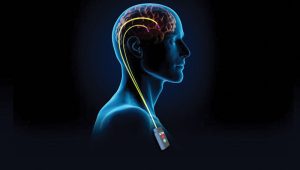 If a patient with a movement disorder does not respond adequately to oral medication adjustments or botulinum toxin injections, then invasive treatments like Deep Brain Stimulation (DBS) or intrajejunal Levodopa gel pump (DuoDopa) may be appopriate.
If a patient with a movement disorder does not respond adequately to oral medication adjustments or botulinum toxin injections, then invasive treatments like Deep Brain Stimulation (DBS) or intrajejunal Levodopa gel pump (DuoDopa) may be appopriate.
While electrode and battery implantation as well as intestinal port implantation are undertaken by an experienced specialist (Functional Neurosurgeon for DBS and Gastroenterologist for DuoDopa pump), the assessment of appropriate candidacy for these methods in done by a highly skilled and experienced Movement Disorders Specialist.
Associate Professor Dr Christos Sidiropoulos is an expert in the management of advanced treatment options for all movement disorders.
Levodopa challenge test for Deep Brain Stimulation (DBS)
In Deep Brain Stimulation intracerebral electrodes are placed as well as a stimulator battery underneath the collarbone. Main indications for Deep Brain Stimulation are Parkinson’s Disease, Essential Tremor, Dystonia, Obsessive Compulsive Disorder and Epilepsy, occasionally also patients with chronic pain.
In Parkinson Disease patients, before the placement of the neurostimulator system, a Levodopa challenge test is undertaken to assess whether the patient is a suitable candidate.
Antiparkinsonian medications are stopped 12 hours prior to the test and the patient comes to the clinic/office the next day in the so called OFF condition (worst motor condition). The neurologist then administers by mouth about 1.2-1.5 times the L-Dopa dose that the patient usually takes in the morning and then waits for about 1 hour or as long as needed for the patient to be in the best ON condition.
The degree of motor improvement (typically at least 30%) between these two conditions along with the neuropsychological and psychiatric assessment and neuroimaging findings help the DBS team identify the right patients for DBS.
DBS electrodes are placed by the Neurosurgeon (with subspecialty training in Functional Neurosurgery) while the patient is awake, to get continuous assessment and feedback from them. Inside the operating room the Movement Disorders Neurologist also help fine tune the electrode positioning, which has to be highly accurate, for the method to work.
After the neurostimulator system is placed, stimulation is turned on within a few weeks and the programming process along with medication adjustment starts. This phase may take anywhere between 3 to 6 months. Dr Christos Sidiropoulos has managed hundreds of patients with DBS systems for
Parkinson Disease and other Movement Disorders and has great experience in the application of this method.
What are the patient selection criteria for DBS?
In general, patients must be medically stable, not be demented or have severe brain atrophy, be psychiatrically stable and have good social support around the time of surgery. It is typically better for patients to be younger than 75 years, although occasionally older patients can be implanted too.
For patients with Parkinson’s Disease:
Troublesome motor fluctuations, i.e. when medications by mouth fail to provide a consistent benefit and there is need for ongoing medication adjustments. Motor fluctuations include dyskinesias and unpredictable OFF time. Troublesome tremor, not controlled with oral medications, is another indication for DBS. It should be noted that patients have to exhibit significant improvement in their L Dopa challenge test prior to surgery and demonstrate intact cognitive abilities during their neuropsychological testing. DBS is not a cure for Parkinson’s Disease but it improves quality of life and may help better control symptoms and reduce total medication dose.
For patients with Essential Tremor:
If their tremor is medication resistant (typically patients should have tried at least two medications for ET) and causes difficulties in their daily activities.
For patients with Dystonia:
DBS is indicated for generalized and cervical dystonia, as well as for dystonic tremor. However improvement may differ depending on a variety of factors. In general a normal brain MRI scan, younger age of onset, shorter disease duration and lack of skeletal deformities, are good prognostic factors.
Results
In carefully selected patients DBS can help as follows depending on diagnosis:
- 25-75% medication reduction and reduction by 4-6 hours in daily OFF time in patients with Parkinson’s Disease.
- 70-80% tremor reduction in Essential Tremor patients.
- 50% average motor improvement in patients with Dystonia.


